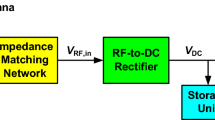Summary
Usually, in a multi-channel data collection system a multiplexing circuit for the analog signals is followed by only one AD converter. In a GC computer system this configuration is difficult to realize, because GC signals have an unusually wide dynamic range, more than 1∶106, and go down to signal levels of less than 1 μV. It is not possible to use an integrating type AD converter for the rejection of line-frequency noise, because sample rates up to 10 per second and per channel are required at the beginning of a chromatogram. A better solution is to use separate AD converters located either within or adjacent to each GC instrument, and transmitting a digital signal; for digital data transmission distance is not a limiting factor. The only disadvantage of such a system is that cost will increase. However, if a comparison is made it is necessary to include all the costs of design, installation and testing of the transmitting lines as well as the costs for a special grounding system and maintenance.
Zusammenfassung
Die Standardanordnung für ein Vielkanal-Datenerfassungssystem enthält einen Analog-Multiplexer mit nachgeschaltetem Analog-Digital-Wandler. In einem Rechnersystem für die Gas-Chromatographie ist diese Ausführung mit Schwierigkeiten verbunden, weil die von den Gas-Chromatographen abgegebenen Signale den ungewöhnlichen dynamischen Bereich von 1∶106 haben und außerdem Spannungen im μV-Bereich erfaßt werden müssen. Ein integrierendes Digital-Voltmeter kann zur Unterdrückung von Störungen mit Netzfrequenz nicht verwendet werden, weil am Anfang eines Chromatogramms bis zu 10 Abfragen pro Sekunde und Kanal erforderlich sind. Eine vorteilhafte Lösung ist die Verwendung von einzelnen A/D-Wandlern, die in oder unmittelbar neben den Gas-Chromatographen angebracht sind, und die Übertragung des Meßwertes in digitaler Form, was ohne Entfernungsbegrenzung möglich ist. Der einzige Nachteil dieses Systems sind die höheren Kosten. Ein Vergleich muß jedoch die Kosten für Entwurf, Ausführung und Prüfung der Signalübertragung ebenso einschließen wie die Kosten für Wartung und spezielle Erdleitungsführung.
Résumé
L'équipement classique d'un système de traitement de données à canaux multiples comprend un multiplexeur transmettant les données analogiques à un unique convertisseur analogique/digital. Dans le cas de traitement par calculateur de données provenant de chromatographes en phase gazeuse un tel montage pose des problèmes en raison de la largeur inhabituelle de la gamme des signaux émis qui peuvent être dans le rapport 1∶106 et du fait que des tensions de l'ordre du μV doivent étre recueillies. On ne peut utiliser un convertisseur analogique digital intégrateur (Voltmètre digital intégrateur) pour supprimer les perturbations dûes à la fréquence du secteur car au commencement d'un chromatogramme il est indispensable de faire jusqu'à 10 scrutations par seconde sur chaque canal. Une meilleure solution consiste à utiliser des convertisseurs analogiques digitaux spécialisés, placés dans la proximité immédiate de chaque chromatographe et à transmettre les résultats de mesure sous forme digitale, ce qui est possible sans limitation de distance. Le seul inconvénient de ce système est son prix élevé. Une comparaison des prix de revient doit cependant tenir compte du coût du projet, de la réalisation et des essais de transmission de signaux ainsi que du coût de la surveillance et du système spécial de mise à la terre.
Similar content being viewed by others
Literature
M. Goedert, G. Guichon: J. Chromatog. Sci.7, (1969) 323
O. Knapp, M. Keller: Chromatographia2, (1969) 500
F. Baumann et al.: “Gas Chromatography 1968” ed.C. L. A. Harbourn, The Institute of Petroleum, p. 348
M. F. Burke, R. G. Thurman: J. Chromatog. Sci.8, (1970) 39
H. Oster et al.: Chromatographia4, (1971) 209
H. Oster, E. Ecker: Chromatographia3, (1970) 220
A. B. Richmond: J. Chromatog. Sci.9, (1971) 92
L. M. Collyer et al.: 8th International Symposium on Gas Chromatography, Dublin, 1970
E. Renschler: Application Note AN-471 (1969) Motorola Semiconductor Products Inc.
H. Doong: Trans. IEEE Nucl. Sci.12 (1965) Nr. 4, 370
J. G. Karohl: J. Chromatog. Sci.5, (1967) 627
J. G. Karohl: In “Gas Chromatography 1968” ed.C. L. A. Harbourn, The Institute of Petroleum, p. 359
Varian Aerograph, Chromatography Data System Description (1969)
D. R. Deans: 8th International Symposium on Gas Chromatography, Dublin, 1970
R. Kaiser: Private Communication, 1971
J. M. Gill: J. Chromatog. Sci.7, (1969) 731
A. J. Raymond et al.: J. Chromatog. Sci.8, (1970) 1
W. O. Wilson: J. Chromatog. Sci.8, (1970) 31
Instem Ltd.: Datachrom I System Description (1971)
J. Hettinger et al.: System IV, VIDAR Autolab (1971)
K. Steinbuch, W. Rupprecht: “Nachrichtentechnik” (1967) Springer Verlag, Berlin
J. E. Oberholtzer: J. Chromatog. Sci.7, (1969) 720
G. V. Peterson: Analytical Advances3 (1970) Hewlett-Packard Company
R. D. McCullough: J. Chromatog. Sci.5, (1967) 635
P. P. Briggs: Control Eng. (September 1967) 75
G. Schomburg: Private Communication, 1971
G. T. Paul et al.: Design and Performance of a GC-Data System, Perkin Elmer Corporation (1971)
Author information
Authors and Affiliations
Rights and permissions
About this article
Cite this article
Busch, U. Multiplexer or dedicated analog-to-digital converter. Chromatographia 5, 63–69 (1972). https://doi.org/10.1007/BF02268297
Received:
Issue Date:
DOI: https://doi.org/10.1007/BF02268297




